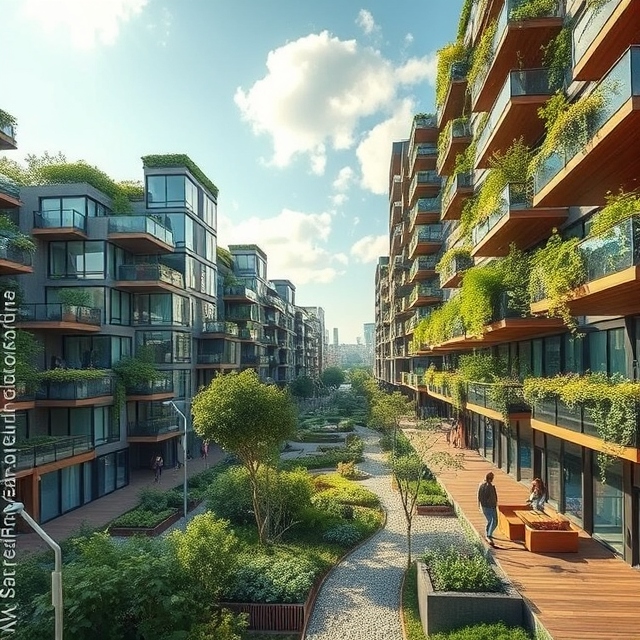Our News.
Catch up on the latest from The Dux Digital – news, updates and insights all in one place.

The Problem with “Busy”
Why being busy isn’t a sign of success - it’s often a sign your systems aren’t working.
Read article
Stop Collecting Tools. Start Building Systems
Every business is using digital tools. But are you really getting the most from them?
Read article
How to Leverage Digital Tools to Drive Real Business Growth
Practical steps, smart tools and proven strategies to help your business attract better clients and work more efficiently - starting today.
Read article
Why Your Marketing Is Like a Bad First Date
So stop being the bad first date who only talks about themselves. Start being the one who listens, connects and shows real value.
Read article
How to Choose the Right Social Media Marketing Agency in Brentwood
If you’re a business owner, your choice of agency will make a huge difference in how effective your campaigns are.
Read article
What Is a “Growth Partner” (And Why Your Business Needs One)?
For businesses in the built environment, it can be the difference between having a supplier who simply ticks boxes… and a partner who actively helps you grow.
Read article
Q3 Momentum: How to End the Year Strong and Set Up for 2026
The smartest firms in the built environment aren’t waiting until December to scramble for a strong finish. They’re using this quarter to sharpen their focus, double down on what’s working and build momentum that not only closes out 2025 but also lays the foundation for success in 2026.
Read article
September: The Reset Button for Your Business Development
August in the built environment can feel like everything slows down. Clients are away and decision making beyond the day-to-day gets pushed to the sidelines.
Read article
10 Years of Me — Told by, Well… Me, The Dux Digital
I wasn’t born in an office. I didn’t arrive with a launch party or a PR splash. Nope — I was conceived in two different pubs.
Read article
Lead Generation in Brentwood – What Works for Local B2B Businesses in 2025
For B2B companies in Brentwood, lead generation isn’t just about getting more enquiries, it’s about attracting the right ones. In 2025, the most successful businesses are blending smart digital strategies with a strong local presence to bring in high-quality leads that actually convert.
Read article
From Boom to Bust: How to Keep Your Pipeline Healthy in Uncertain Times
If you run a business in the built environment, you’ll know how quickly things can change.
Read article
Make August Count: 5 Ways to get Ahead While it’s Quiet
August in the UK built environment sector can feel eerily quiet. Projects slow down. Inboxes go cold. Decision makers disappear off to the Med.
Read article
How to Set Up a Proactive Growth Engine for Your Business
Move beyond referrals and tenders and take control of your pipeline.
Read article
Social Media Done Properly – With a Local Brentwood Touch
If you’ve ever found yourself posting on Instagram or Facebook and thinking, “What’s the point?”, you’re not alone.
Read article
Proactive Beats Reactive: Using Digital Tools to Build a Healthier Pipeline in the Built Environment
If you run a business in the built environment, chances are you’ve been stuck in reactive mode more than once.
Read article
What Tendering Doesn’t Tell Clients (And How to Use Marketing to Fill the Gaps)
Tenders are supposed to be about fairness. A level playing field where everyone gets a shot at winning the work.
Read article
Rethinking the Tender Trap: Why It’s Time to Build a Smarter Growth System
If you are in construction, architecture, civil engineering, facilities management or property consultancy, you probably know the drill all too well.
Read article
Construction Marketing Agency in Brentwood
If you’re a builder, contractor, or construction firm in Brentwood, you probably don’t have time to mess about with marketing. You want more leads, more quotes going out, and more jobs booked in. That’s where The Dux Digital comes in. We’re a construction marketing agency in Brentwood that actually understands the trade. No jargon, no pointless ... Construction Marketing Agency in Brentwood
Read article
LinkedIn Isn’t Just for Job Hunters
If you still think LinkedIn is just for recruiters and people looking to change jobs, it is time to take another look. In 2025, LinkedIn is one of the most powerful B2B platforms for construction, property and built environment businesses. Why? Because the people who make decisions – developers, planners, commercial directors, asset ... LinkedIn Isn’t Just for Job Hunters
Read article
From Reactive to Proactive: How FM Firms Are Using Digital Strategy to Win Long-Term Contracts
Sir Keir Starmer’s announcement yesterday presented an ambitious plan focused on clean energy, major infrastructure projects, housing and improved living standards.
Read article
Can’t Compete on Price? Here’s How to Compete on Positioning
Running a business in construction and constantly losing work to cheaper competitors? You are not the only one.
Read article
How The Dux Digital Helps Brentwood Businesses Scale Sustainably
Looking for a business growth agency in Brentwood? The Dux Digital helps local companies scale through tailored strategies and digital marketing expertise.
Read article
Don’t Just Tell People What You Do – Tell Them Why It Matters
In 2025, attention is hard to win – and even harder to keep. If your marketing simply says what you do, it is probably being ignored.
Read article
AI + Human = Growth: How the Most Successful Businesses in 2025 Are Using Both
The AI conversation is everywhere, but the smartest businesses are not choosing between AI or human expertise. They are using both, and as a result, they are moving faster, communicating better and growing smarter.
Read article
The Marketing Gap: Why Great Work Isn’t Enough Anymore.
You’ve delivered quality projects. You’ve built your reputation. But the phone isn’t ringing like it used to and you’re wondering why.
Read article
Tired of Low-Quality Enquiries? Here’s How to Attract Better Clients
The problem isn’t always the client. Sometimes, it’s the way your business is positioned and presented online. In 2025, if you're still getting low-quality enquiries, it’s time to shift how you attract and filter leads so you’re speaking to the right people, not just anyone.
Read article
From Chaos to Clarity: How AI Helps Business Owners Make Smarter Decisions, Faster
Focus on how AI tools (from chat to data analysis) reduce overwhelm and help leaders get to action quicker.
Read article
How Brentwood Businesses Are Boosting B2B Sales Through Digital Marketing
B2B businesses in Brentwood are becoming more proactive in how they attract and convert leads.
Read article
Stop Saying “Just Checking In”: How to Reach Out with Purpose (and Actually Get a Response)
If your outbound outreach still starts with “Just wanted to see if you needed any help…” it’s time to rethink your approach.
Read article
5 Ways Construction and Property Businesses Can Use AI to Win More Work
In 2025, smart construction and property businesses are using artificial intelligence to streamline marketing, generate more leads and stay ahead of the competition.
Read article
How to Turn Your Project Portfolio Into a Lead Generation Machine
Most firms operating in the built environment have a portfolio of past projects. It’s often tucked away on a page of the website, maybe with a few images and a short description.
Read article
Why Your Construction Business Needs More Than Just a Website in 2025
For many construction and built environment businesses, the website has always been treated like a digital brochure. A box to tick. Something to “have” rather than something that works.
Read article
Why Construction Firms Can’t Rely on Referrals Alone in 2025
For years, the construction industry has relied on one key source of new work: referrals. Whether through word of mouth, repeat business or trusted networks, many firms have built solid reputations by delivering quality work and letting that work speak for itself.
Read article
Education-Based Marketing: For Smarter, Scalable Growth
If you're a business owner in the built environment sector, this approach might just be your secret weapon for attracting better leads, building trust, and scaling your revenue.
Read article
The Magic Of Face-To-Face Meetings In The Digital World
In today's hyper-connected world, it's easy to slip into a routine of purely digital interactions – emails flying back and forth, endless video calls, Slack notifications interrupting that long awaited date night; it can be endless.
Read article
The Rise of Results-as-a-Service: Why SaaS May No Longer Meets Business Needs
Business operations are shifting from the traditional Software-as-a-Service (SaaS) model to Results-as-a-Service (RaaS). Unlike SaaS, which provides tools companies must operate themselves, RaaS directly aligns costs with measurable results, such as increased sales or reduced inefficiencies.
Read article
How AI Can Help You Produce More Content (Without the Extra Graft)
The built environment sector moves fast. Between managing projects, handling clients, meeting deadlines and keeping up with industry shifts, who has time to play digital content creator?
Read article
The Dux Digital’s Debut at Futurebuild 2025!
We are thrilled to announce that The Dux Digital will be exhibiting for the very first time at this year’s Futurebuild expo!
Read article
Why Sleeping on Automation Could Cost – Adopt a Growth Mindset and Achieve Sustainable Outcomes
The construction industry has long relied on referrals and networks to secure work, but these methods are often difficult to scale and no longer offer the same growth opportunities in today’s fast-paced market.
Read article
The Secret to Unlocking Growth for Built Environment Businesses
The construction industry has long relied on referrals and networks to secure work, but these methods are often difficult to scale and no longer offer the same growth opportunities in today’s fast-paced market.
Read article
Unlocking the future: How AI is shaping Digital Growth in 2025
In 2025, Artificial Intelligence (AI) is no longer just a buzzword; it’s the game-changer shaping how businesses grow and connect with their audiences.
Read article
Sponsoring the Brentwood Business Awards 2024: A Full-Circle Moment
This year, The Dux Digital had the privilege of sponsoring the Best Sales and Marketing category at the prestigious Brentwood Business Awards.
Read article
What Labour’s Ambitious Vision Could Mean for the Built Environment in the Near Future
Sir Keir Starmer’s announcement yesterday presented an ambitious plan focused on clean energy, major infrastructure projects, housing and improved living standards.

The Dux Digital: Finalists in the Essex Business Awards 2024!
We’re thrilled to announce that The Dux Digital were named finalists in the Professional Services category of the Essex Business Awards 2024!
Read article
Celebrating Success: The Dux Digital Wins Best Sales & Marketing Award at the Brentwood Business Awards 2023
We are thrilled to announce that The Dux Digital has been recognised as the Best Sales & Marketing business at the Brentwood Business Awards 2023!
Read article
Growing your business online in 2023 – focussing on “digital strategy”
Pretty much every business on the planet nowadays has a digital face. Whether that be a website, social media accounts, a blog or a combination of these.
Read articleWhat Labour’s Ambitious Vision Could Mean for the Built Environment in the Near Future

Sir Keir Starmer’s announcement yesterday presented an ambitious plan focused on clean energy, major infrastructure projects, housing and improved living standards. While many details are still to be clarified, the vision sparks interesting hypotheses for the built environment industry – particularly for civil engineers, architects, surveyors, contract services and housing developers.
If even part of these proposals materialise, they could reshape priorities, processes and opportunities across the sector. Here, we explore how these key themes might collectively impact the built environment professions in the near future.
1. Clean Energy: Driving a New Era of Sustainable Development
The clean energy focus could encourage a seismic shift in how projects are planned and delivered. This priority suggests a push for decarbonisation and a stronger emphasis on integrating sustainability into every aspect of construction and development.
Key hypotheses for impact:
- Greater Demand for Green Projects: The transition to renewable energy infrastructure and energy-efficient buildings could create significant opportunities to design and deliver projects aligned with low-carbon goals.
- Innovation in Materials and Methods: From sustainable concrete to energy-efficient modular construction, the pressure to reduce carbon footprints will likely accelerate innovation across the industry.
- Skills and Compliance Challenges: Meeting clean energy goals may require upskilling teams and navigating increasingly complex environmental regulations, presenting both opportunities and challenges for professionals.
Firms that invest in sustainability expertise and technologies may be well positioned to seize the opportunities these changes could present.
2. Major Infrastructure Projects: A Wave of Public Works
Labour’s plan for 150 major infrastructure projects hints at a potential boom in public works, though specific details are yet to be revealed. If realised, this could bring substantial opportunities for the industry to help modernise transport systems, utilities and urban infrastructure.
Possible collective impacts:
- Increased Collaboration Across Disciplines: Delivering large-scale infrastructure efficiently will likely require close collaboration between architects, engineers, surveyors and contractors. The ability to coordinate multi-disciplinary efforts could become a competitive edge.
- Advanced Delivery Models: Fast-tracking major projects could push for adoption of innovative delivery techniques, such as digital twins and off-site construction, to improve speed and precision.
- Economic Growth for Surrounding Developments: Infrastructure improvements often enhance the feasibility and attractiveness of nearby housing and commercial projects, creating a ripple effect for housing developers and service providers.
The scale of these projects could demand not just expertise but also adaptability, as firms align with potentially accelerated timelines and evolving priorities.
3. Housing: Scaling Up Delivery at Unprecedented Levels
The promise to build 1.5 million new homes raises questions about how the industry can meet such a target and signals potential opportunities for housing developers and professionals across the built environment.
Key hypotheses for collective impact:
- Adoption of Modular Construction: Meeting high-volume housing needs quickly and cost-effectively may require a shift toward modular and prefabricated housing solutions.
- Strain on Resources: The sheer scale of this target could test the capacity of supply chains, skilled labour pools and land availability, requiring the sector to find creative solutions to scale up sustainably.
- New Standards for Housing Design: Developers, architects and engineers may need to align with stricter requirements for sustainability, affordability and energy efficiency as part of delivering future-ready homes.
The housing challenge may offer significant opportunities for those prepared to innovate and collaborate, but it will also demand careful planning to overcome resource and regulatory constraints.
4. Living Standards: Rethinking Community-Centric Design
The emphasis on improving living standards suggests a broader investment in public spaces, schools, hospitals and community facilities, alongside housing. For the built environment, this could reshape the way professionals approach design and delivery.
Potential impacts include:
- Holistic, People-Centric Projects: A focus on accessibility, sustainability and social value could redefine the priorities of public and community projects, requiring professionals to think beyond technical delivery.
- Integrated Public and Private Collaboration: Developers, engineers, and surveyors may find increasing opportunities to work on projects where public and private priorities converge, particularly in urban regeneration schemes.
- Enhanced Public Realm Design: Architects and planners could face growing demand for well-designed public spaces that enhance wellbeing and promote community engagement, with an emphasis on quality over quantity.
While the scale of these investments remains speculative, the potential to contribute meaningfully to community life offers a compelling opportunity for the sector.
5. Preparing for the Future
Labour’s vision remains just that – a vision. But it offers valuable insights into potential industry trends that could shape the near future for civil engineers, architects, surveyors, contract services and housing developers. To prepare for these possibilities, firms and professionals might consider:
- Investing in Green Expertise: Upskilling in sustainability and low-carbon practices will be critical to meet evolving demands.
- Adopting Digital Tools: Embracing tools like Building Information Modelling (BIM) and digital twins could drive efficiency and adaptability in delivery.
- Fostering Collaboration: Complex, large-scale projects will demand strong partnerships across disciplines and supply chains.
The built environment industry has the potential to lead in delivering this vision. Whether these plans come to fruition or evolve into different priorities, the opportunity to innovate, collaborate and adapt is clear.
What’s your perspective on how these ambitions might shape our industry? Let’s start a conversation on preparing for what’s next.